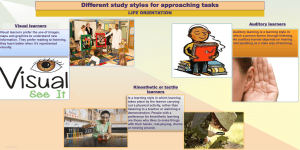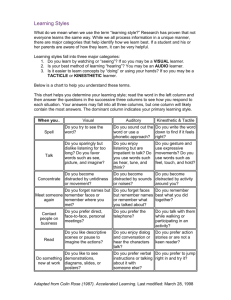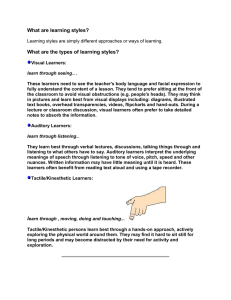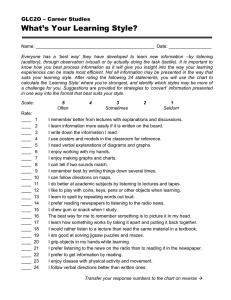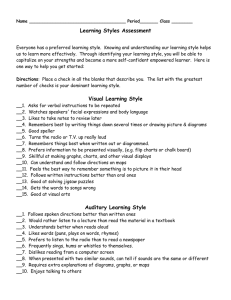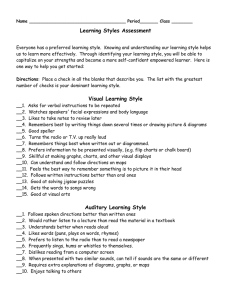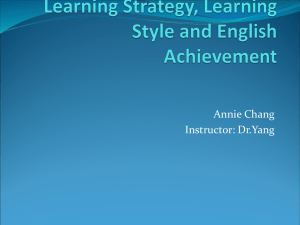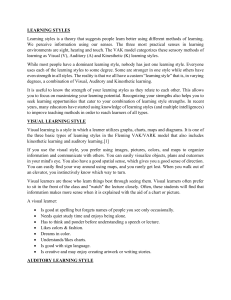power point 2
advertisement
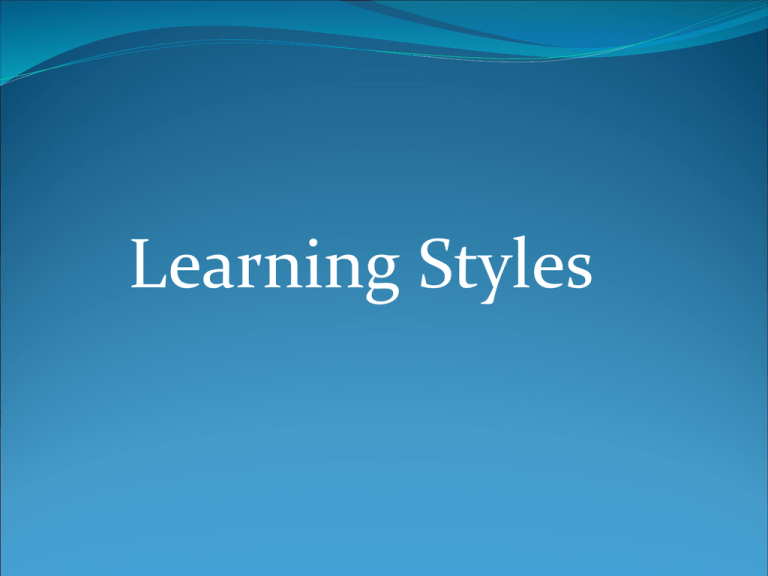
Learning Styles What is a Learning Style? Learning styles focus on how your brain receives information. No one else learns or processes information exactly the way you do! If you discover how you process information, you can learn things more efficiently and in less time. Who wouldn't want to cut their study time in half and still learn as much? When learning something new or difficult, you naturally tend to use the learning style you prefer. It is good to know what this learning style is so that you can respond most effectively to the material being presented. Even when the material is not being presented in the way you prefer (which happens often in a college setting) you can use this knowledge of learning styles to adjust and be flexible, no matter who your instructor is or what the topic might be. Everyone has one learning style that is dominant. A key word is that our dominance is a preference, not an absolute. When learning is new, difficult, or stressful, we prefer to learn in a certain way. Types of Learning Styles 1 - Visual 2 - Auditory 3 - Tactile/Kinesthetic Visual Visual Learners learn through seeing Characteristics of a Visual Learner: Reader/observer Scans everything; wants to see things, enjoys visual stimulation Enjoys maps, pictures, diagrams, and color Needs to see the teacher’s body language/facial expression to fully understand Not pleased with lectures Daydreams; a word, sound or smell causes recall and mental wandering Usually takes detailed notes May think in pictures and learn best from visual displays Auditory Auditory Learners learn through listening and talking things through…….. Characteristics of an Auditory Learner: Interpret the underlying meanings of speech through listening to tone of voice, pitch, speed and other nuances Prefers directions given orally Seldom takes notes or writes things down Prefers lectures to reading assignments Often repeats what has just been said; talks to self Tactile/Kinesthetic Tactile/Kinesthetic Learners learn through moving, doing and touching…….. Characteristics of a Tactile/Kinesthetic Learner: The “Do-er” Needs to touch, handle, manipulate materials and objects, especially while studying or listening Counts on fingers and talks with hands Good at drawing designs Often doodles while listening, thus processing information Good at sports, mechanics, using appliances and tools Often adventurous May find it hard to sit still for long periods May become distracted by their need for activity and exploration Finally Remember that we’re all different – you don’t have to fit one mould If you’re not learning well, or bored by learning, try out new strategies that suit you better The more types of learning activity you engage in, the more you’re likely to cover your preferred styles Learning styles Prepared by : Hajed M. Al-Hajed Supervised : Dr. Sir Al-khatim

